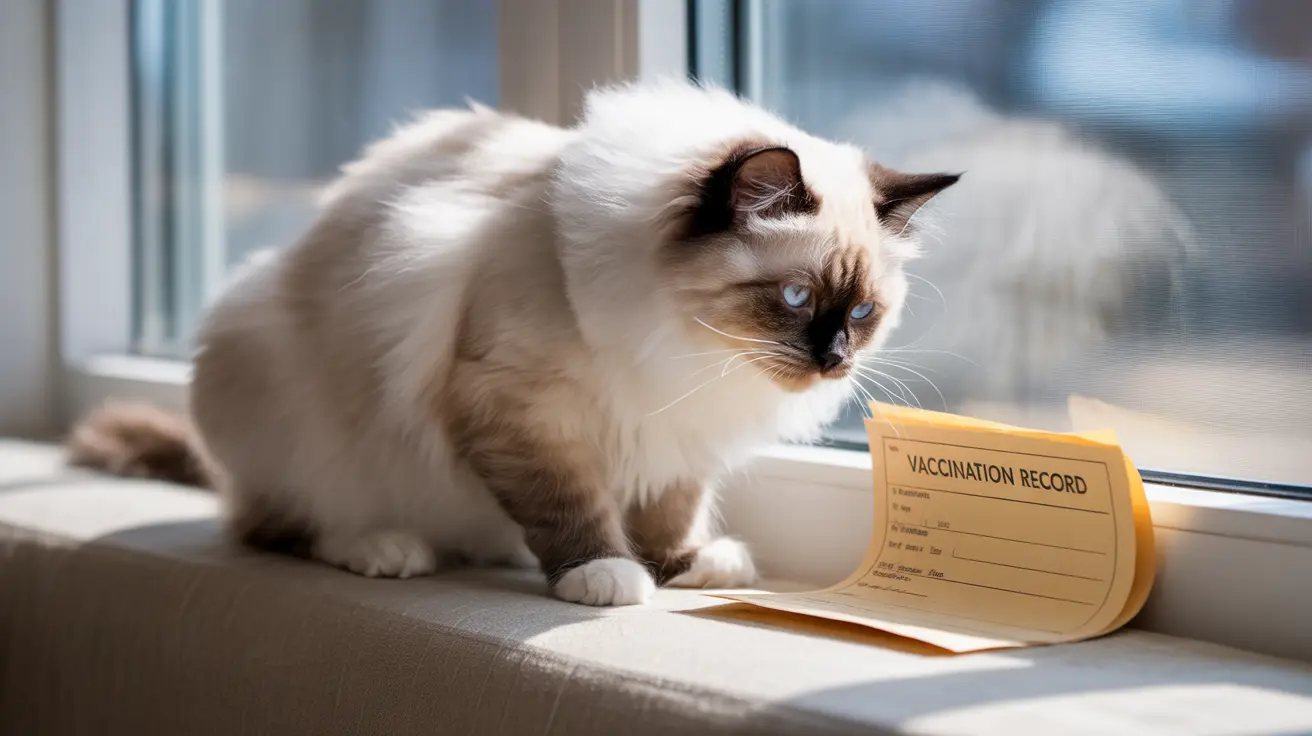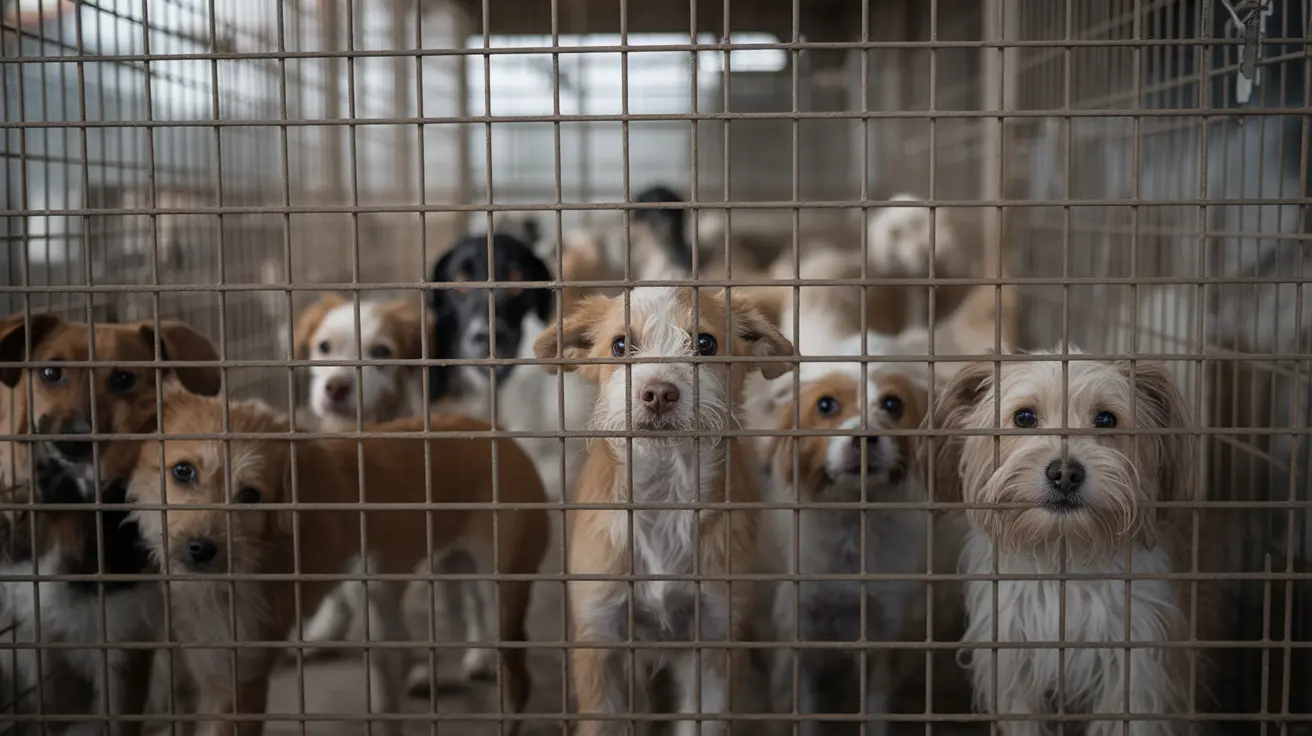Protecting Cats from Viral Infections: A Complete Guide to Vaccination and Prevention
Protecting cats from viral infections is one of the most critical responsibilities of cat ownership, requiring a comprehensive approach that combines proper vaccination protocols, environmental management, and proactive health monitoring. While many cat owners understand that vaccines are important, the complexity of feline viral diseases and the specific risks they pose often require deeper understanding to ensure optimal protection for our feline companions.
Viral infections in cats can range from manageable respiratory conditions to fatal diseases that pose risks not only to your pet but potentially to human family members as well. The key to effective protection lies in understanding which vaccines your cat needs, when they need them, and how to create an environment that minimizes exposure risks while maintaining your cat's quality of life.
This comprehensive guide will walk you through everything you need to know about protecting cats from viral infections, from essential vaccination schedules and core vaccine requirements to managing multi-cat households and recognizing early warning signs that require immediate veterinary attention.
Understanding Core Vaccines: Your Cat's Essential Protection
Core vaccines represent the foundation of protecting cats from viral infections, as they target the most dangerous and widespread diseases that affect felines. These vaccines are universally recommended for all cats regardless of their lifestyle, indoor or outdoor status, because the diseases they prevent are either fatal, highly contagious, or pose significant public health risks.
The rabies vaccine stands as perhaps the most critical component of core vaccination protocols. Rabies is universally fatal once symptoms appear and is transmissible to humans, making vaccination not only a health imperative but often a legal requirement. Most regions mandate rabies vaccination, and this protection is essential even for strictly indoor cats due to the possibility of exposure through wildlife such as bats that may enter homes.
The FVRCP vaccine provides comprehensive protection against three major viral threats: feline viral rhinotracheitis virus (herpesvirus), calicivirus, and panleukopenia (feline distemper). This combination vaccine addresses upper respiratory infections that can cause chronic health issues and panleukopenia, which causes severe gastrointestinal symptoms and can be fatal, particularly in young cats.
Feline Leukemia Virus (FeLV) Vaccination
The FeLV vaccine occupies a unique position in core vaccination protocols, as it's considered essential for kittens and adult cats at risk of exposure. Feline leukemia virus presents particular challenges because infected cats can remain asymptomatic for years while still being capable of transmitting the virus to other cats. This makes vaccination crucial for any cat that may have contact with other felines or access to outdoor environments.
Optimal Vaccination Schedules: Timing for Maximum Protection
Establishing the proper vaccination schedule is crucial for protecting cats from viral infections effectively. The timing of vaccines must account for the natural protection kittens receive from maternal antibodies, which can interfere with vaccine effectiveness if administered too early, while ensuring protection begins before this maternal immunity wanes.
Kitten Vaccination Protocol
The standard kitten vaccination schedule typically begins between 6 to 8 weeks of age with the initial FVRCP vaccine and often includes the first FeLV vaccine. At this age, maternal antibodies are beginning to decline, making it the optimal time to start building the kitten's own immune response to these critical pathogens.
The second round of vaccinations occurs at 10 to 12 weeks, involving the second FVRCP dose and FeLV booster. This timing ensures continued protection as maternal antibodies continue to decrease and the kitten's immune system becomes more capable of responding to vaccines.
The final kitten vaccination typically occurs at 14 to 16 weeks and may include an additional FVRCP dose if needed based on the veterinarian's assessment, the rabies vaccine, and a final FeLV booster if part of the protocol. This timing ensures that virtually all maternal antibodies have cleared, allowing for optimal vaccine response.
Adult Cat Maintenance Schedules
Adult and senior cats require regular booster vaccinations to maintain immunity against viral infections. The frequency of these boosters varies depending on the specific vaccine and the cat's risk factors, typically ranging from annually to every three years. Rabies vaccination frequency depends on local regulations and the type of vaccine used, with options for annual or three-year boosters.
FVRCP boosters may be administered yearly or every three years, with the decision based on the cat's age, lifestyle, and exposure risk. Cats with higher exposure risks, such as those in multi-cat households or with outdoor access, may benefit from more frequent vaccination schedules.
Recognizing and Managing Vaccination Side Effects
While vaccination is essential for protecting cats from viral infections, responsible pet owners should understand potential side effects and know when to seek veterinary care. Vaccination reactions are relatively rare, occurring in approximately 0.5% of cats, but recognizing symptoms ensures prompt treatment when reactions do occur.
Mild side effects may include localized soreness at the injection site, temporary lethargy, or slight appetite reduction. These symptoms typically resolve within 24 to 48 hours and are considered normal immune responses to vaccination.
More serious reactions requiring immediate veterinary attention include persistent vomiting, diarrhea, facial swelling, hives, respiratory distress, or severe lethargy lasting more than two days. In rare cases, injection site tumors can develop, though this risk is significantly lower with modern vaccine formulations and proper administration techniques.
Non-Core Vaccines: Tailored Protection Based on Risk
Non-core vaccines provide additional protection for cats with specific risk factors or lifestyle considerations. These vaccines target pathogens that may be problematic in certain environments but aren't necessary for all cats.
Bordetella and Chlamydophila vaccines are particularly recommended for cats in multi-cat environments, shelters, or catteries where respiratory infections can spread rapidly. These vaccines help prevent bacterial respiratory infections that can complicate viral respiratory diseases.
The feline infectious peritonitis (FIP) vaccine is generally not recommended due to insufficient protection and controversy regarding its effectiveness. Current research suggests that other management strategies, such as early weaning and isolated hand-rearing in breeding environments, may be more effective for FIP prevention.
Creating a Safe Environment: Beyond Vaccination
Protecting cats from viral infections extends beyond vaccination to encompass environmental management and lifestyle considerations. Understanding transmission routes helps cat owners create safer environments that reduce infection risks.
Multi-Cat Household Management
Multi-cat households face unique challenges in preventing viral infection spread. Proper quarantine protocols for new cats, stress reduction strategies, and maintaining good hygiene can significantly reduce infection risks among household cats.
New cats should be quarantined for a minimum of two weeks before introduction to resident cats, with veterinary examination and testing completed during this period. This protocol allows time to identify any infectious diseases and ensures new cats are healthy before joining the household.
Indoor vs. Outdoor Considerations
Even strictly indoor cats require protection from viral infections because many pathogens can be transmitted indirectly through objects, clothing, or other animals. Humans can inadvertently bring viruses into the home on shoes or clothing, and other pets like dogs can carry certain feline pathogens without showing symptoms.
Special Considerations for Specific Viral Diseases
Some viral infections require specialized approaches beyond standard vaccination protocols. Understanding these unique challenges helps cat owners make informed decisions about their pets' care.
Feline Immunodeficiency Virus (FIV)
Currently, no vaccine exists for Feline Immunodeficiency Virus, making prevention through other means essential. FIV is primarily transmitted through bite wounds, so preventing fights between cats and maintaining cats indoors or in secure outdoor enclosures significantly reduces infection risk.
Feline Infectious Peritonitis (FIP)
FIP presents unique challenges because the available vaccine offers limited and controversial protection. Prevention strategies focus on reducing exposure to the coronavirus that can mutate to cause FIP, particularly in breeding environments where early weaning and isolated hand-rearing may prevent infection.
Supporting Your Cat's Immune System
While vaccination provides the primary defense against viral infections, supporting your cat's overall immune system through proper nutrition, stress reduction, and regular veterinary care enhances their ability to fight off infections and respond effectively to vaccines.
High-quality nutrition tailored to your cat's life stage provides the essential nutrients needed for optimal immune function. Regular veterinary check-ups allow for early detection of health issues that might compromise immune function and ensure vaccination schedules remain appropriate as cats age.
Stress reduction is particularly important because chronic stress can suppress immune function, making cats more susceptible to viral infections even when properly vaccinated. Maintaining predictable routines, providing adequate resources for all cats in multi-cat households, and creating safe spaces where cats can retreat when needed all contribute to reduced stress levels.
When to Seek Emergency Veterinary Care
Recognizing early signs of viral infections and knowing when to seek immediate veterinary care can be lifesaving. Some viral infections progress rapidly and require prompt treatment to prevent severe complications or death.
Emergency signs requiring immediate veterinary attention include persistent vomiting and diarrhea, especially when accompanied by lethargy and loss of appetite, high fever, difficulty breathing, severe dehydration, or any sudden change in behavior or activity level. These symptoms may indicate serious viral infections that require prompt medical intervention.
Cost Considerations and Wellness Planning
The cost of protecting cats from viral infections through vaccination typically ranges from $15 to $40 per visit, making it one of the most cost-effective health investments cat owners can make. Many veterinary clinics offer wellness plans that help manage preventive care expenses, making regular vaccination more affordable for pet owners.
When compared to the potential cost of treating severe viral infections, which can easily reach hundreds or thousands of dollars, regular vaccination represents significant financial protection in addition to health benefits.
Frequently Asked Questions
How often do indoor cats need vaccinations?
Indoor cats still require regular vaccinations because viral infections can be transmitted indirectly through objects, clothing, or other pets. Core vaccines like rabies, FVRCP, and FeLV (for at-risk cats) should follow the same schedule as outdoor cats, with boosters every 1-3 years depending on the vaccine and your cat's risk factors.
Can kittens be vaccinated if they're showing signs of illness?
No, vaccinations should only be administered when cats are healthy. Signs of illness like runny nose, watery eyes, lethargy, or fever require postponing vaccination and seeking veterinary care, especially if symptoms worsen. Vaccinating sick cats can be ineffective and potentially harmful.
What should I do if my cat has a reaction to a vaccine?
Mild reactions like soreness or temporary lethargy are normal and typically resolve within 24-48 hours. However, seek immediate veterinary care for severe symptoms including persistent vomiting, difficulty breathing, facial swelling, hives, or extreme lethargy lasting more than two days.
How long do maternal antibodies protect kittens?
Maternal antibodies from nursing typically protect kittens until about 8-12 weeks of age, though this varies. This protection can interfere with early vaccines, which is why kittens need multiple vaccine doses and boosters to ensure immunity develops as maternal protection wanes.
Do cats need different vaccines based on their lifestyle?
While all cats need core vaccines (rabies, FVRCP, and often FeLV), lifestyle factors determine the need for non-core vaccines. Cats in multi-cat environments, shelters, or those with outdoor access may need additional vaccines like Bordetella or more frequent boosters.
Can viral infections spread between cats and dogs in the same household?
While most feline viral infections are species-specific and don't affect dogs, some pathogens can be carried by dogs without causing illness in them, potentially exposing cats. This is another reason why vaccination remains important even for cats living only with dogs.
What's the difference between modified live and killed virus vaccines?
Modified live vaccines use weakened live viruses that stimulate strong immunity but may not be suitable for all cats, especially those with compromised immune systems. Killed virus vaccines are safer for immunocompromised cats but may require more frequent boosters to maintain immunity.
Conclusion
Protecting cats from viral infections requires a comprehensive approach that goes far beyond simply getting annual shots. The foundation of protection lies in understanding your cat's individual risk factors, maintaining appropriate vaccination schedules, and creating an environment that minimizes exposure while supporting optimal immune function.
By working closely with your veterinarian to develop an individualized vaccination protocol, staying vigilant for signs of illness, and maintaining good hygiene and stress management practices, you can provide your feline companion with the best possible protection against viral diseases. Remember that the investment in preventive care through vaccination and proper management is minimal compared to the costs—both financial and emotional—of treating severe viral infections that could have been prevented.






